 |
  
 |
Hawaii Marine Debris Observation Tour (May 18 to June 6, 2023 ) |
| |
COVID has prohibited us from continuing a research trip for approximately three years. Since no restrictions exist, we left for Hawaii on May 18. Hawaii is a popular tourist destination; the beaches are clean and nicely maintained.
However, looking closely at the beaches, you can detect many microplastics and tiny plastic fragments.
These two samples particularly attracted our attention because they have the value of educational references.
On May 30th, 2023, we searched the plastic debris on the beach at Waimanalo in Hawaii for any pieces in a deteriorated condition of plastic that would serve as useful visual reference material.
This plastic we picked (33mm x 27mm) seems like a broken piece of a small container.
Below is a microscopic image of the small plastic debris surface we picked. This image shows the typical deterioration process of plastic on the superficial side and being flaked or desquamated.
There are many factors in the physical degradation of plastic. When we see this piece, photodegradation may be the leading cause because the UV radiation in sunlight cause the polymer chains to break apart.
There are also some dented pits, possibly created by plastic-eating bacteria.
Each flaked piece is 40~300 nanometers, but this size does not mean this plastic debris disappears but remains in the environment even after becoming smaller pieces.
A significant part of the problem with plastic products is that even when they seemingly disappear or become invisible, their harmful effects remain unchanged as microplastics or nanoplastics. |
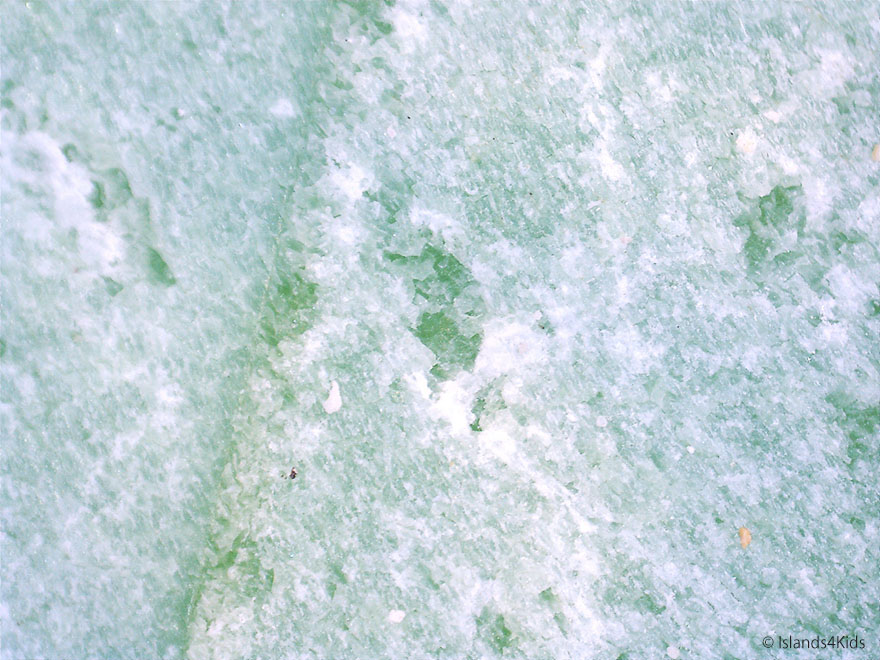 |
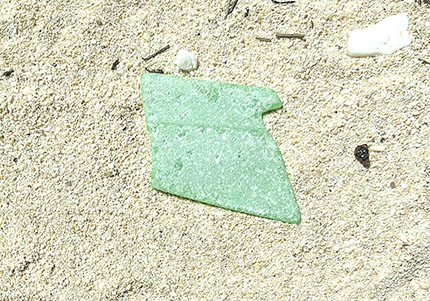 |
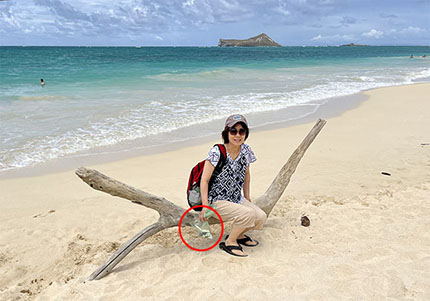 |
|
| This photo is typical of a child's toothbrush drifting through the ocean for three to four years and has become home to many marine organisms. For aquatic organisms that cannot swim around on their own, whatever they first reach, they release an adhesive substance to anchor themselves to it and begin to multiply.
The largest colony on this toothbrush is a group of Cheilostome Bryozoan from the North Pacific.
The partition lines of each compartment are the protective outer coverings of Polyzoa. The median size of each compartment of Zooid is 300Ám x 800Ám.
Another one that looks like blood vessels start penetrating the colony is Red Graciaria Marco Algae. |
|
|
 |
Miyako Island, Okinawa, Japan Marine Debris Observation Tour (July 12 to Aug. 10, 2019) |
| |
We traveled to Tokyo, Japan, Tateyama City of Chiba Prefecture, Naha and Itoman City of Okinawa Prefecture, and Miyako Island over six weeks from June 24 to August 10, 2019, for two research programs.
During our stay on Miyako island, we did our own marine debris collection activities on two beaches and one with a local beach cleanup volunteer group.
In addition to those three cleanup activities, we also surveyed many beaches' ecological conditions that are impacted by marine debris. |
| |
 |
| |
|
Only 1078 feet (328 meters) long, this small Kaginmi beach of Ikema Island is known for its annual sea turtle spawning grounds. On this day, we joined the local beach clean-up volunteers to clean up the beach.
We were surprised when we saw the massive amount of micro-plastics that was broken up into small pieces washed ashore along with the large debris like fishing nets and stylo forms on this small beach. |
| |
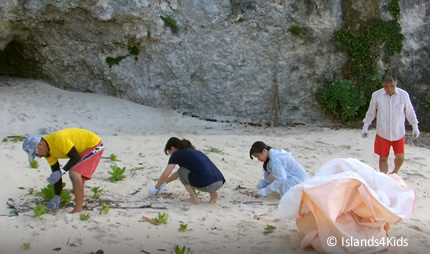 |
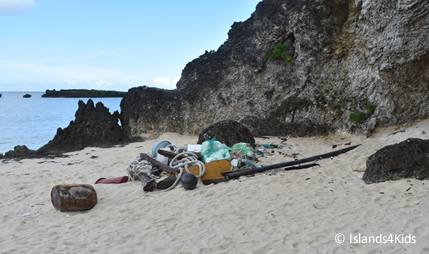 |
 |
 |
| Majya Beach, Miyako Island |
South Beach of the Karimata Underwater Marine Park |
| |
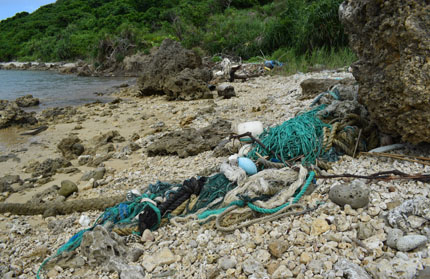 |
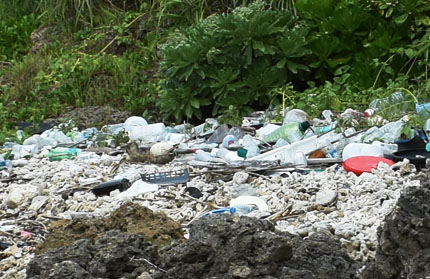 |
We visited as many beaches as we could during our stay on Miyako island to study the impact of marine debris on the beach vegetation and overall ecosystem.
The small beaches, which are not frequented by local people and tourists, are also difficult place for beach cleanup volunteers to approach.
The thick layer of debris that washes up deep inside the beach vegetation.
When the root of the plant dies off in this way, the sandy beach becomes easy to be scraped by the wave, and the problem of beach runoff (coastal erosion) begins to occur. |
| |
  
 |
Oahu Beach Marine Debris Observation Tour - Swanzy Beach Park (September 11, 2018)
|

 |
Oahu Beach Marine Debris Observation Tour - Malaekahaina Beach Campground (September 11, 2018)
|
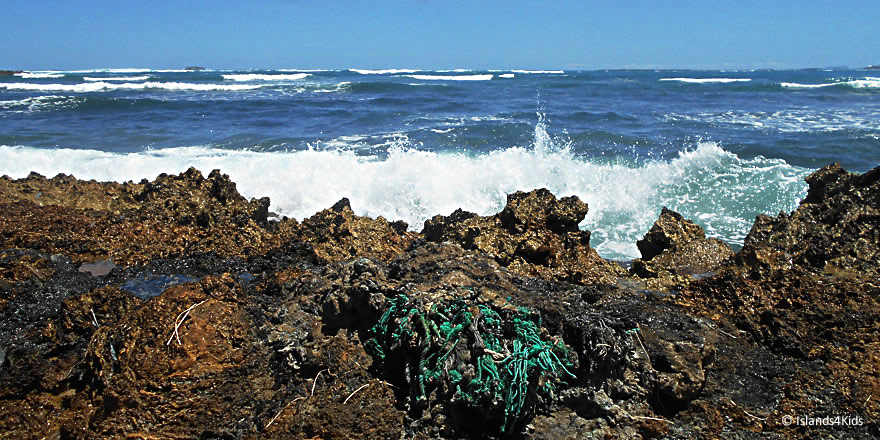
 |
The super rare object sputtered from albatross stomach (May 28, 2018)
|
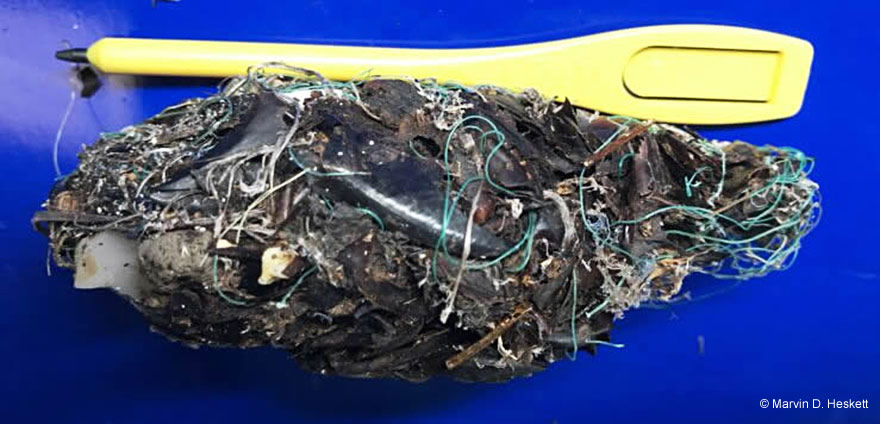
| |
This is a super rare object sputtered from an albatross stomach found at Kure Atoll Island in Hawaii, located 1,370 miles Northwest of Honolulu. This island is known as one of the breeding sites of albatross; however this solitary island far off in the Northern Pacific Ocean is also thickly covered with enormous amounts of marine debris washed ashore. As a consequence of this debris, thousands of albatross die from obstruction in their digestive system and thousands of chicks die as they absorb no nutritional value from the plastic debris fed by their mother albatross.
The object (Size: 105 mm x 45 mm) of this image contains many plastic particles, fishing lines, fishing nets, plastic shopping bag fragments, small metal pieces, and many other non-digestive marine debris. This may give us new findings on the ecological impact of marine debris to the coastal and marine species.
Analyzation and evaluation will be fully performed by Professor Saido’s laboratory. We are hoping to introduce details of the analytical findings in the near future. |
| |
Image subject: Sputtered stomach contents (gastro-esophageal reflux) of albatross
Size: 105 mm x 45 mm
Image provided by: Dr. Katsuhiko Saido, Professor of School of Ocean and Earth Science and Technology (SOEST), University of Hawaii at Manoa. Professor and senior Scientist of Nippon University Graduate School of Engineering Research, Japan
Photo taken: July 2017
Photo by: Marvin D. Heskett, Senior Chemist at Element Environmental LLC
Location: Kure Atoll Island, Hawaii (28.393157, -178.293414). 1,370 mils (2,200 km) NW of Honolulu, HI. |
| |
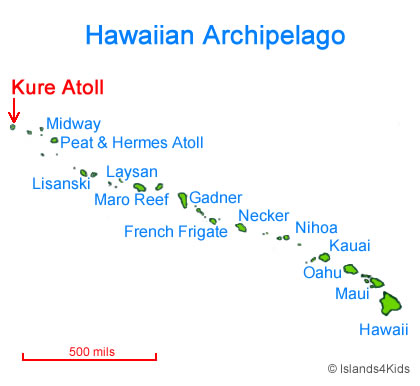 |
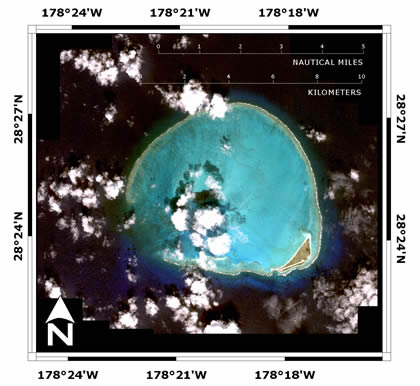
Photo courtesy: NOAA National Centers for Coastal Ocean Service |
| |
 |
Celebrating Earth Day at Redmond, WA (April 22, 2018)
|
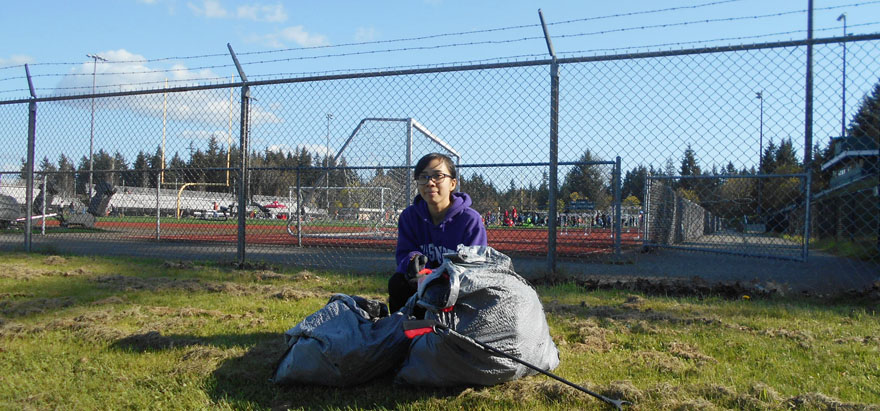
| |
| On Sunday, April 22nd, my father and I spent two hours cleaning up the grounds of Redmond High School where I once attended. We focused on the area along the football and baseball fields. Considering the high school demographic and our proximity to various sporting events, it was very interesting to see the overwhelming amount of candy wrappers, beverage bottles, and streamers that were collected compared to the findings at our usual beach clean-ups at Ocean Shores. We will be spreading out our collected trash in the coming weeks to sort and analyze. |
| |
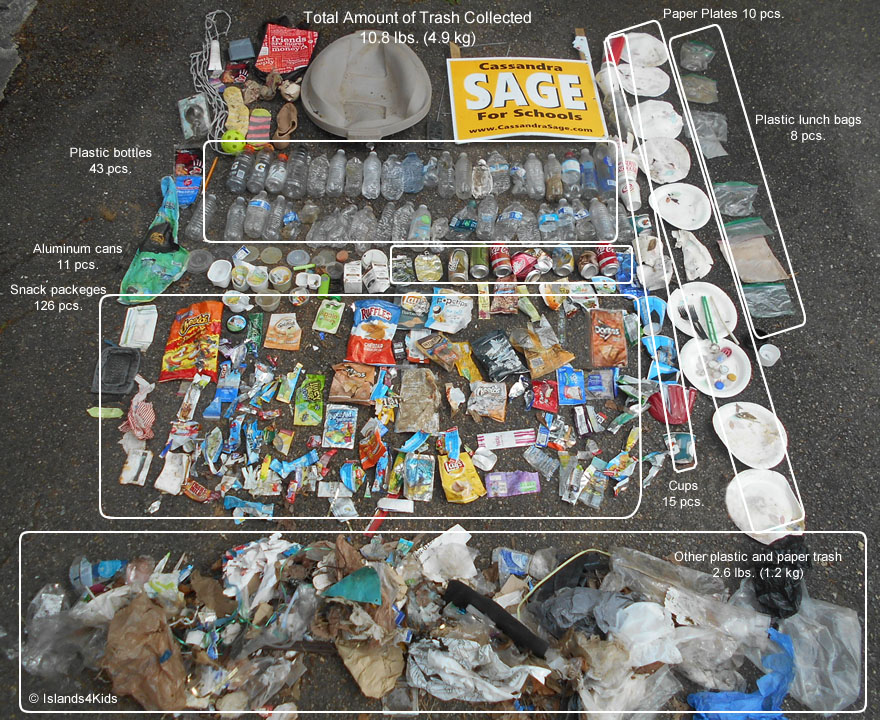
 |
Earth Day 2018 (April 22, 2018)
|
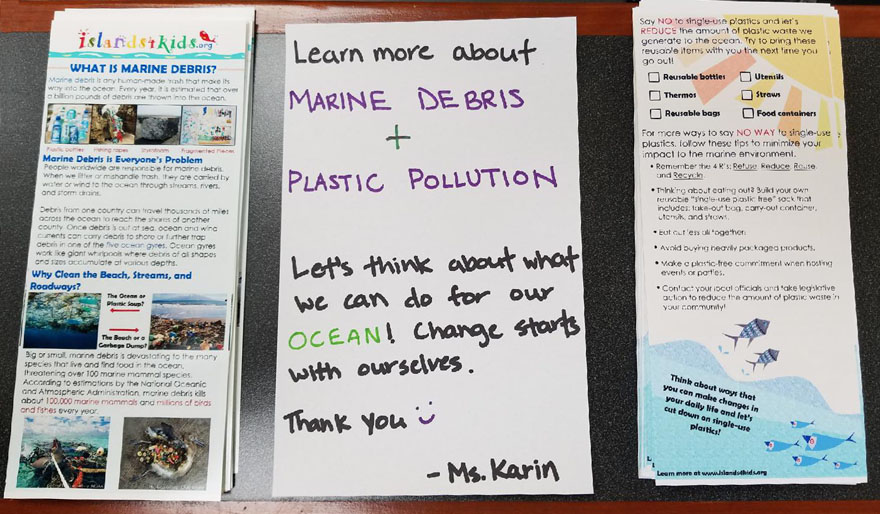
In preparation for Earth Day, we created informational brochures about marine debris and plastic pollution for the families of the Kiddie Academy of Kirkland. We were also able to display several posters to raise awareness of the devastating impacts of plastics on marine life.
We recieved wonderful feedback from one of the Pre-K classes that discussed the brochures together! At pick-up time, children were very eager to share their "cool brochures" with their parents and talk to them about how "we need to reduce, reuse, and recycle to save the planet".
The overwhelming enthusiasm expressed by these young children truly demonstrates the significance of involving children from an early age in taking action and thinking about their relationship with the natural environment! |
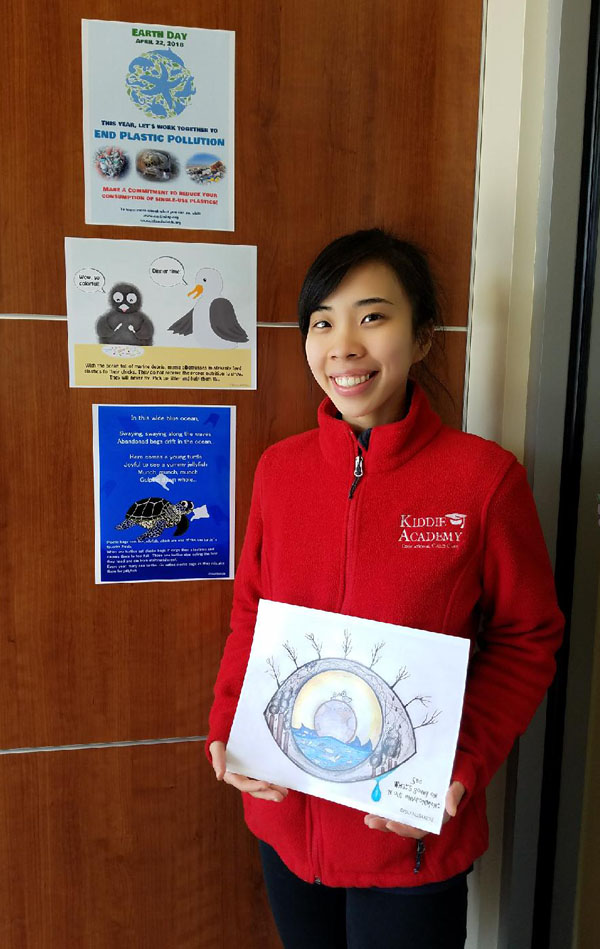 |
| |
|
 |
Alert of plastic container with sulphuric acid, hydrochloric acid and hydrogen peroxide (April 22, 2018) |
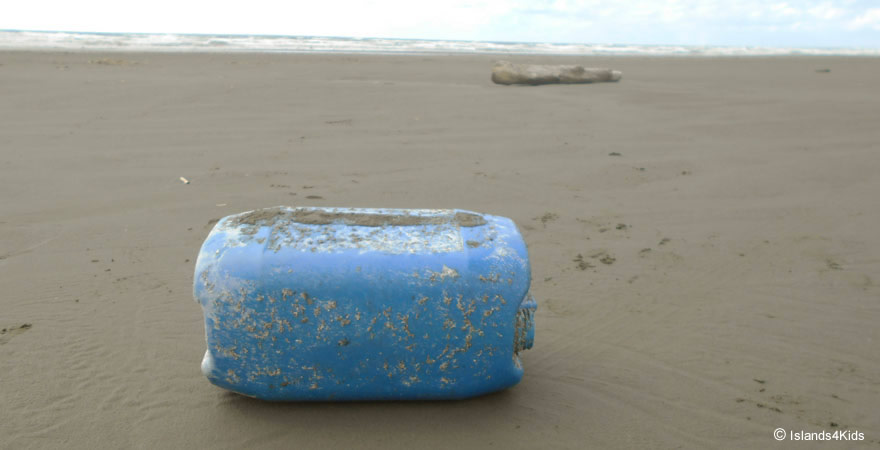
|
| |
According to the Japanese Ministry of the Environment (JME), these plastic containers are drifting ashore to coastal areas across Japan. These containers have mostly identical dimensions of: 9” x 11” x 20” or 24cm x 28cm x 50cm.) According to JME, driftage of these containers started in 2006 and the highest number of arrival in its peak year was in 2016. The total number collected along shorelines during the peak year was 16,029, but these containers are continuing to be found on shorelines to this day.
Among plastic bottles collected at the beach, about 12% of containers were holding chemicals like sulphuric acid (H2SO4), hydrochloric acid (HCI), and hydrogen peroxide (H2O2). JME analyzed that these chemicals are commonly employed by seaweed farmers in South Korea, despite the government’s banning of use of unsafe chemical for food products.
Another problem is that these plastic containers are illegally dumped in to the ocean and many of them are discharged to the Pacific Ocean.
At our marine debris research at the Ocean Shores on April 1, 2018, we found one of these identical plastic containers for the first time.
If you find this plastic container at beaches of the Pacific Northwest, please keep it in a strong garbage bag to take to the local Health Department for safe disposal. Please be especially caution if the cap is on and liquid-like content still remain inside.
According to the GHS (Globally Harmonized System of Classification and Labelling of Chemicals), Sulphuric acid and hydrochloric acid are classified as follow;
Hazard statement: H 314, H 335
H 314: Causes severe skin burns and damage
H 335: May cause respiratory irritation |
| |
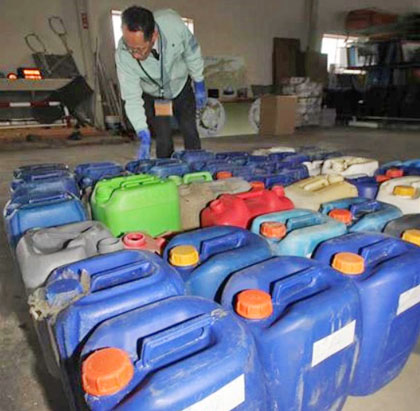
City official of Izumo, Shimane Prefecture examine the plastic containers which washed ashore at the beaches of their city.
(Photo curtesy: Sankei Newspaper 4/22/2018) |
|

|
 |
Arrival survey at Ocean Shores, WA (April 1, 2018) |
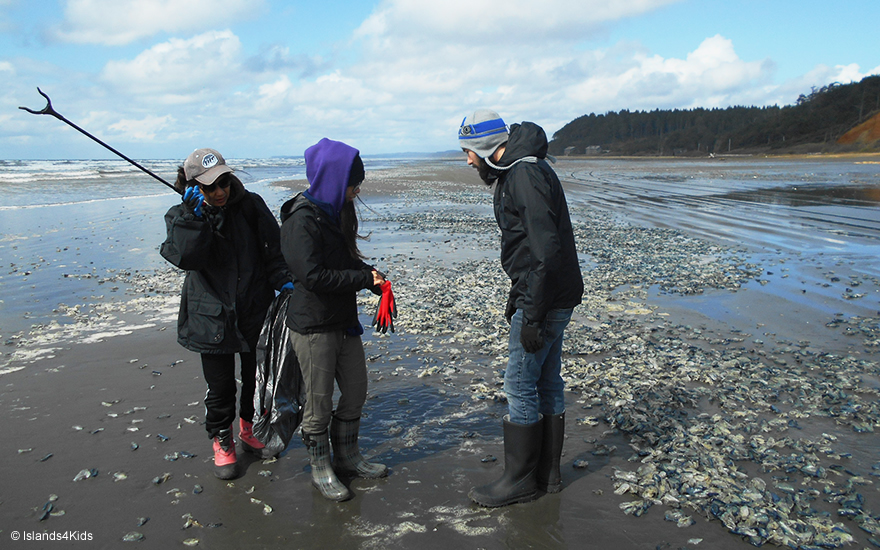
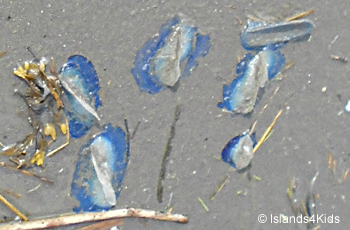 |
On April 1, 2018, we went to Ocean Shores for another marine debris research. The highest temperature of the day was 46°F, but under the intense pressure of strong, cold winds, we felt like it was below 35°F throughout the research.
A huge number of Physalia physalis, also known as the man-of-war or floating terror, were blown off by a strong wind and stranded on Rososevelt Beach, about 16 miles north of Ocean Shores.
When you see Physalia physalis at the beach, please do not touch them because they are extreamely poisonus and even deadly. |
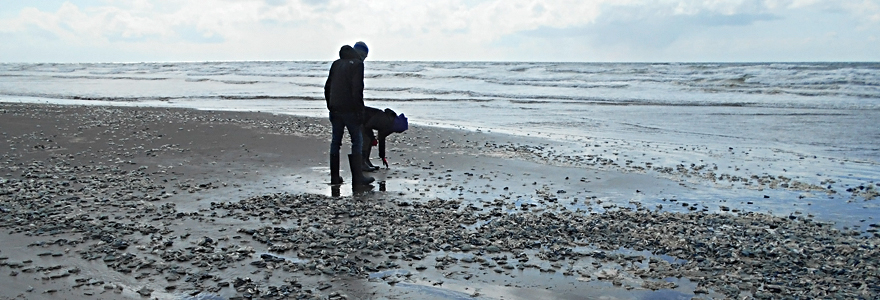
 |
Research at Ocean Beach Park in San Diego, CA (March 14, 2018) |
On March 14, Dr. Katsuhiko Saido, who we first met at the Fifth International Marine Debris Conference in 2011, invited us to participate in research to measure water quality and collect microplastics at Ocean Beach Park in San Diego, California.
.
Dr. Saido is a professor at the School of Ocean and Earth Science and Technology (SOEST) at the University of Hawaii and a Senior Research Fellow of the Graduate College of Industrial Technology at Nihon University.
Dr. Saido is recognized worldwide as a developer of the most advanced detection method of plastic toxicity in the ocean water. |
| |

| |
| Dr. Saido demonstrated his method of collecting sand samples when visiting beaches around the world. He recommended using a stainless steel shovel to dig and collect sand. We first collected two samples from wet sand (one from the surface and one 30cm below the surface). Our next two samples were collected from dry sand (one from the surface and one 30cm below the surface). Each sample was carefully placed in a bag and labeled with the following information: date, name of beach, location at the beach, and depth). |
| |
 |
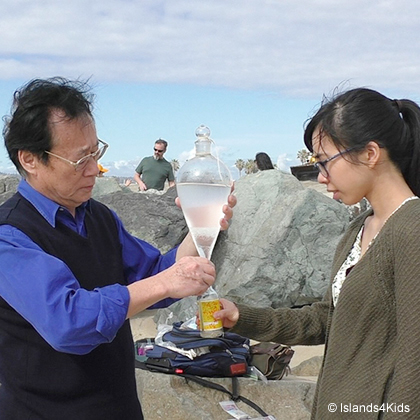 |
| We first poured 140ml of dichloromethane, an organic solvent, into the squibb silica glass separatory funnel. After collecting sea water, we filtered about 900ml of it through the funnel, being sure to place a cotton sheet in the filter to prevent microplastics or other small debris from entering into. |
| |
|
| The dichloromenthane and sea water chamber was shaken for about a minute before the contents were poured back into the 140ml glass jar. We then repeated the process two more times, noticing that the color of the solvent changed from clear to a light yellow color. |
| |
|
 |
6th International Marine Debris Conference (March 14, 2018) |

| |
| The Sixth International Marine Debris Conference was a week of learning, inspiration, and networking. More than 700 people from 50 countries attended to this conference. During our four days at the conference, we attended a number of technical session presentations and panels ('International Leadership' and 'State of the Science') that provided us with new knowledge and unconventional ways of studying marine debris. |
| |

| |
| At the Welcome Ceremony and Plenary, we heard from a number of inspiring leaders from around the world who are dedicated to addressing the issue of the increasing accumulation of marine debris into the ocean and the impact of plastic pollution on the marine environment. |
| |
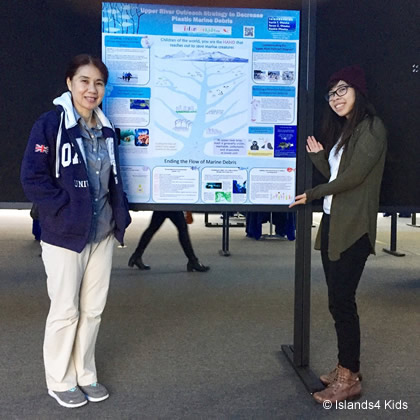 |
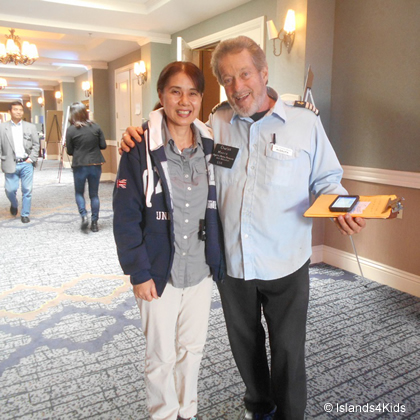 |
|
| We had the wonderful opportunity to meet with Captain Charles Moore, founder of the Algalita Marine Research and Education. We also attended his technical session presentation on their documentation of an increasing accumulation of marine debris while sailing across the north Pacific subtropical gyre. |
|
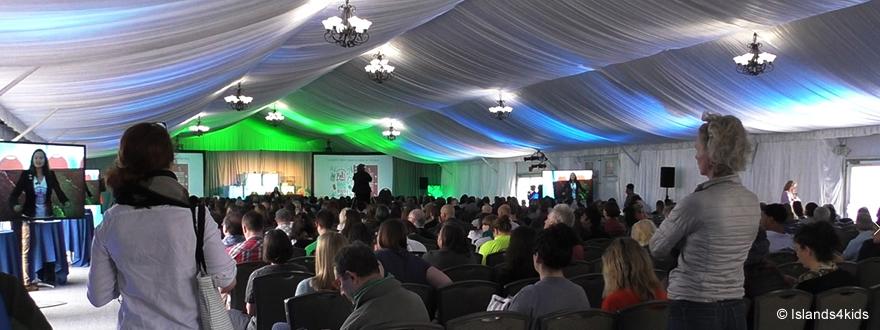
| Plenary Session (March 14, 2018) |
| We were inspired by youth leaders such as Melati Wijsen (founder of Bye Bye Plastic Bags), whose passion and drive to take action motivates us to cotinue our development of marine debris education and youth empowerment. |
| |
 |
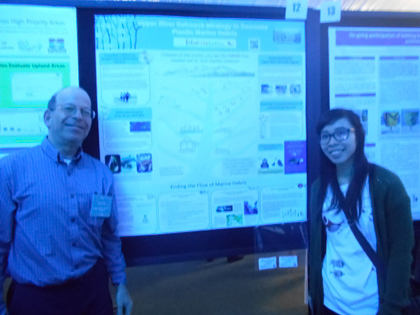 |
| Sharing data with Professor Saido |
Mr. Nir Barnea, Regional Coodinator
NOAA Marine Debris Program |
| |
 |
6th International Marine Debris Conference (December 20, 2017) |
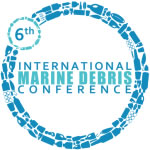 |

(6IMDC logo and banner: courtesy of internationalmarinedebrisconference.org) |
| |
| We are happy to announce that we will be exhibiting our education outreach program, “Broad Area Outreach Technology Study (BAOTecS)", at the 6th International Marine Debris Conference (6IMDC). |
The International Marine Debris Conference is hosted by NOAA (National Oceanic and Atmospheric Administration of US Government ) and the United Nations Environment Programme in San Diego, CA from March 12 – 16, 2018.
Three staff members of ISLANDS4KIDS will be attending this conference as presenters and we will interact with prominent scholars and distinguished researchers from around the world.
|
| |
 |
Wawamalu Beach Park, Honolulu, HI (September 20, 2017) |
We visited Wawamalu Beach Park, one of our fixed obsevation point to see the beach's ecological condition and marine debris.
Beach was very clean and well maintained, but we found more volume of breached corals washed ashore than previous observation.
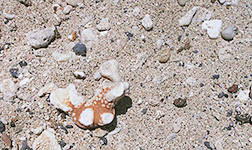
|
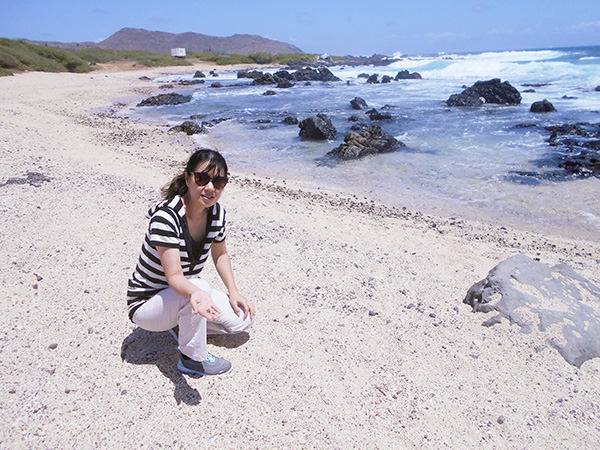 |
| |
 |
Exit Survey at Ikema Island in Miyakojima, Okinawa (August 7 - 8, 2017) |
We conducted an Exit Survey at Miyako Island (located southwest of Okinawa, Japan) on August 7~8, 2018.
Miyako Island is an optimal location to observe marine debris originated in Southeast Asian countries before beginning to drift along the ocean current of the northern Pacific (Great Pacific Gyre), as many of them reach Washington coasts.
Mizuhama Beach in Ikema Island is only 63 meters x 17 meters, but like many other beaches of this island, this small beach is packed with marine debris originating from Japan and various other Asian countries.
Click here to view more information
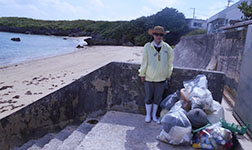
|
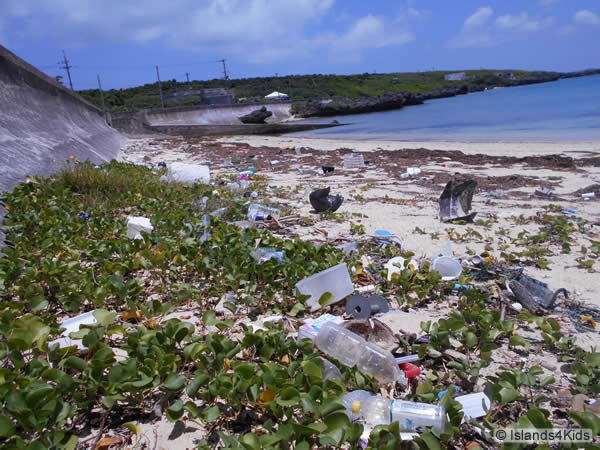
Our outreach program members in Miyakojima completed this Exit Servey. |
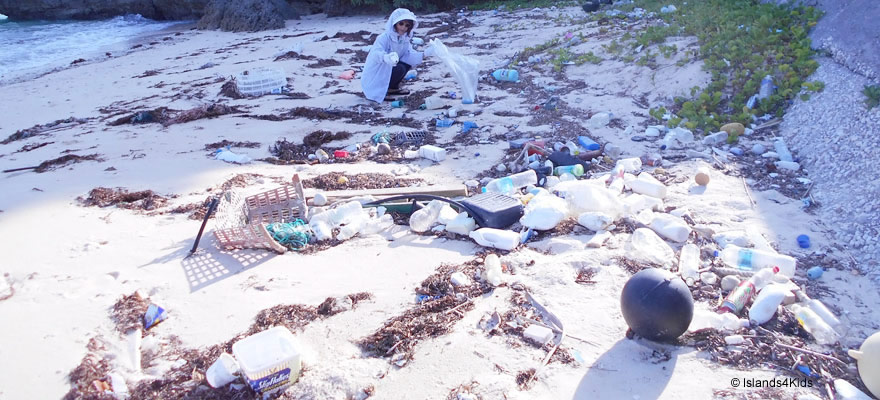
 |
Japan Tsunami Debris (July 5, 2017) |

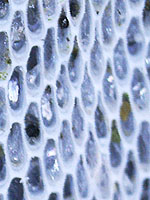 |
This animation is our calculation using NOAA’s OSCURS program. Each course begins at the three major prefectures and the Fukushima nuclear power plant hit by the tsunami on Mar. 11, 2011.
Updated as of July 5, 2017, 2308 days after the tsunami occurred. To see the detailed map, go to tsunami debris. |
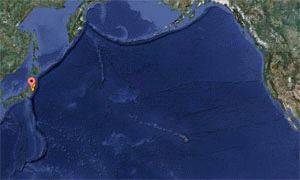 |
|
|
|
 |
Presentation at the Kirkland KIWANIS CLUB (May 17, 2017) |

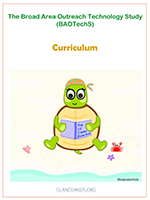 |
On May 17, 2017, we made a presentation at the Kirkland KIWANIS CLUB to introduce our research activities.
|
 |
|
|
|
 |
Arrival survey at Ocean Shores (April 15, 2017) |
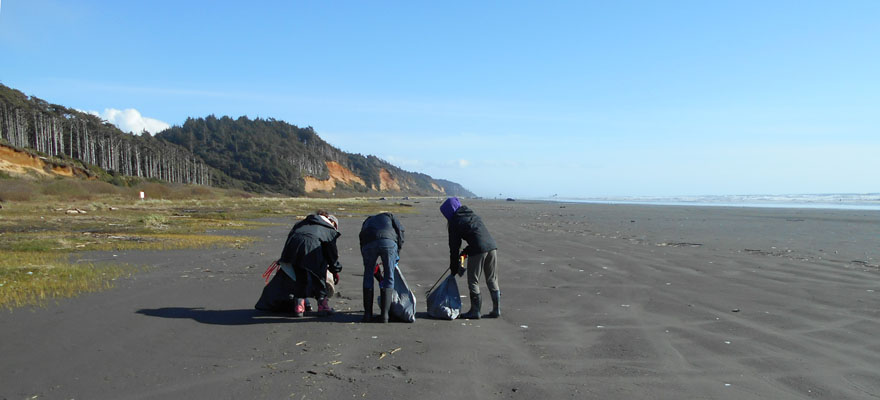
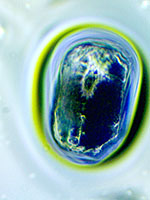 |
On April 15, 2017, we went to Ocean Shores for another marine debris research.

|
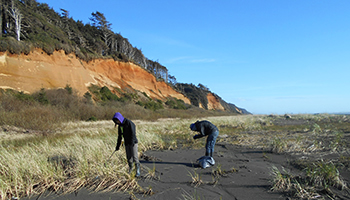 |
|
|
|
 |
Japan Tsunami Debris (April 11, 2017) |
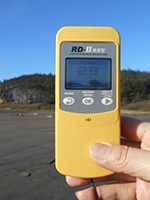 |
This animation is our calculation using NOAA’s OSCURS program. Each course begins at the three major prefectures and the Fukushima nuclear power plant hit by the tsunami on Mar. 11, 2011.
Updated as of April 10, 2017, 2222 days after the tsunami occurred. To see the detailed map, go to tsunami debris |
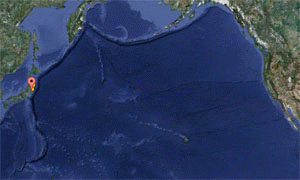 |
|
|
|
 |
Presentation at the Redmond KIWANIS CLUB (March 17, 2017) |

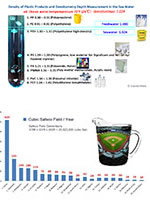
|
On March 17, 2017, we made a presentation at the Redmond KIWANIS CLUB to introduce our research activities.
|
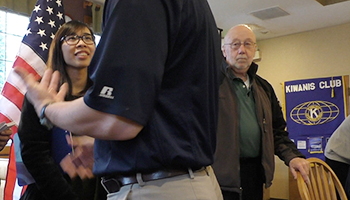 |
|
|
|
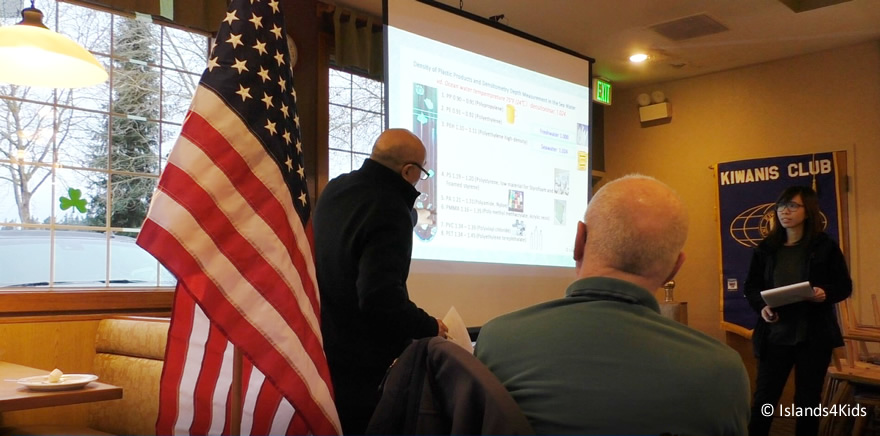
 |
Arrival survey at Ocean Shores (June 18, 2016) |

 |
Arrival survey at Ocean Shores (February 18, 2016) |

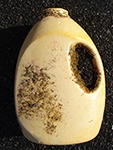 |
It was a rainy day, but we collected many Asian marine debris. We also found interesting creatures in some of the debries.
|
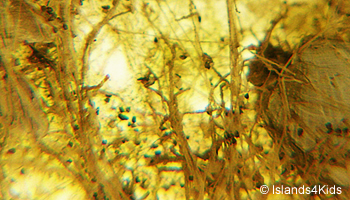 |
|
|
|
 |
Arrival survey at Ocean Shores (October 11, 2015) |
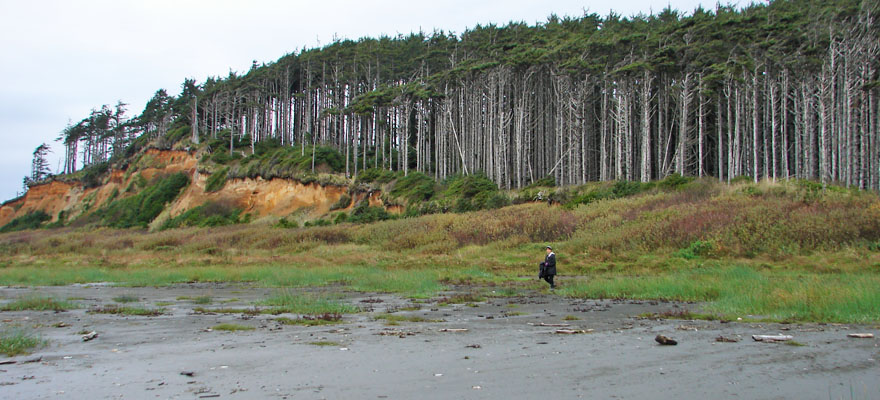
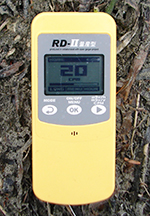 |
On October 11, 2015, we went to Ocean Shores (0.5 mile south of the Elk Creek River) for another marine debris research.
We also measured the intensity of radiation at the beach of Ocean Shores. The detected values of background (atmospheric air 12 cpm) and seaweeds washed ashore (20 cpm) were lower than the average amount of spontaneous emissions of radiation. The general conditions of the beach were not out of the ordinary and we did not see any unusual debris washed ashore. |
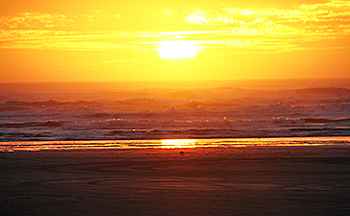 |
|
|
|
 |
Asian Marine Debris Display at Library (October 3, 2015) |
We began Asian marine debris displays at Redmond and Kirkland libraries.
There are real Asian Marine Debris collected at Ocean Shores and some interesting information about marine debris.
When you have a chance to come to these libraries, please check out the display case.
|
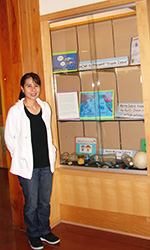 |
 |
| |
 |
Arrival survey at Ocean Shores (March 22, 2015) |
| |
| Rain started to fall as we were collecting Asian marine debris. The rain continued to pour and did not stop all throughout our research. We were soaked wet and most of photos taken that day were defocused, but it was fun. |
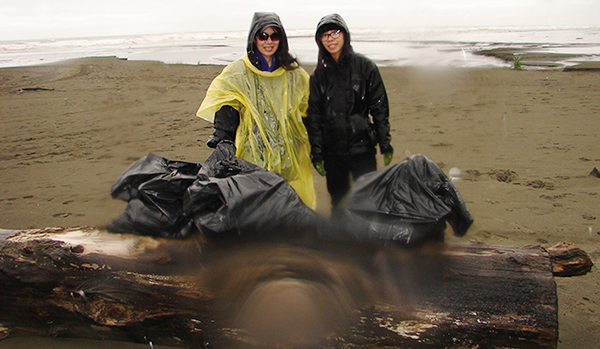 |
| |
|
 |
"Plastic waste inputs from land into the ocean" (March 20, 2015) |
| The latest article, “Plastic waste inputs from land into the ocean ” on Science Magazine indicates that 275 million metric tons of plastic waste was generated in 192 coastal countries in 2010, with 4.8 to 12.7 million MT entering the ocean. Without waste management infrastructure improvement, plastic waste potentially entering the ocean from land is predicted to increase by an order of a magnitude by 2025. 12 out of 20 countries ranked by mass of mismanaged plastic waste are Asian countries. More Asian marine debris will flow into the Pacific Ocean and arrive to the coastlines in the Pacific Northwest and Canada. |
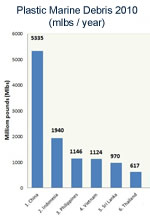 |

Photo courtesy: American Association for the Advancement of Science |
| http://science.sciencemag.org/content/347/6223/768 |
|

|
Marine Debris Research in Hawaii (September 27, 2014) |
 |
A Home in a Small Light Bulb (July 30, 2014) |
| |
Amphipoda, a group of macroplanktons, find a home in a small light bulb. This demonstrates a good example of why we cannot simply remove all debris from the ocean or shore. Many debris have come to shelter marine life, so it is harmful to them if we simply dispose of the debris they are in.
(Lightbulb found during marine debris research at Ocean Shores on July 17, 2014)
|
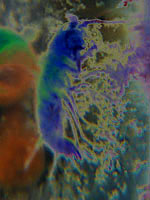 |
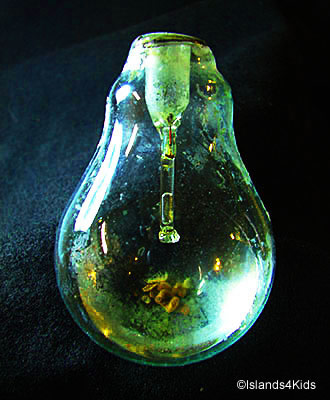 |
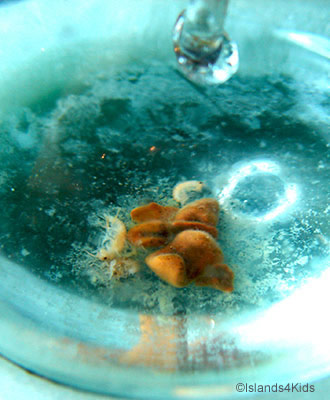 |
| |
|
|
| |
 |
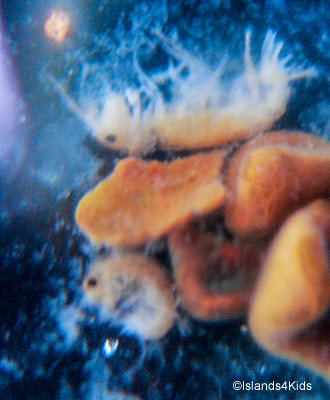 |
|
|
|
 |
Arrival survey at Ocean Shores (July 17, 2014) |
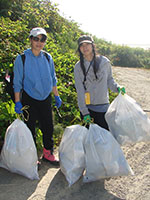
|
The arrival situation will give us a view of the overall situation of Asian originated marine debris traveling along the Kuroshio (Black Current). Some of them reach the beaches of the Pacific Northwest. With a total of 28 Asian marine debris found, it was the most we have found so far. We also found the most debris originating from Japan than we have in the past. |

|
|
|
|
 |
5th International Marine Debris Conference (March 23, 2011) in Honolulu, Hawaii |
| The Fifth International Marine Debris Conference took place March 21-25, 2011, in Honolulu, Hawai’i. The National Oceanic and Atmospheric Administration and the United Nations Environment Programme are co-organizers of the conference, |
| |
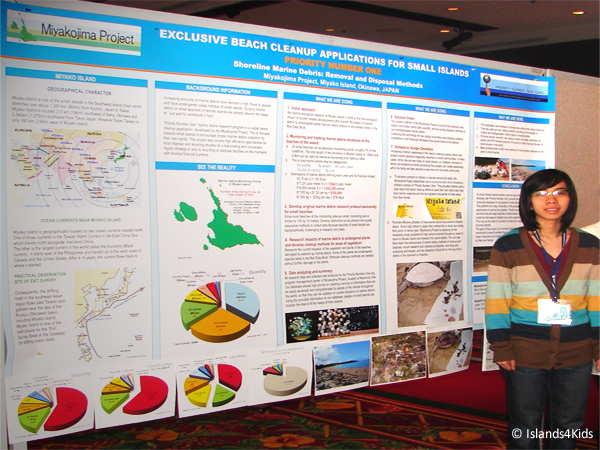 |
Miyakojima Project and Miyakojima Kids Net are socio-environmental study cluster of ISLANDS4KIDS.ORG in MiyakoIsland, Okinawa.
Our poster presentation ran from March 21 through March 23.
|
| |
The Opening Session of the 5th International Marine Debris Conference was held at the beautiful garden of histrical Bishop Musium in Honolulu.
Four hundred forty people from 38 countries participated in workshops, field trips, technical and policy sessions, poster presentations, and panel discussions. They enjoyed receptions, exhibits of marine debris art from around the globe. |
 |
| |
|
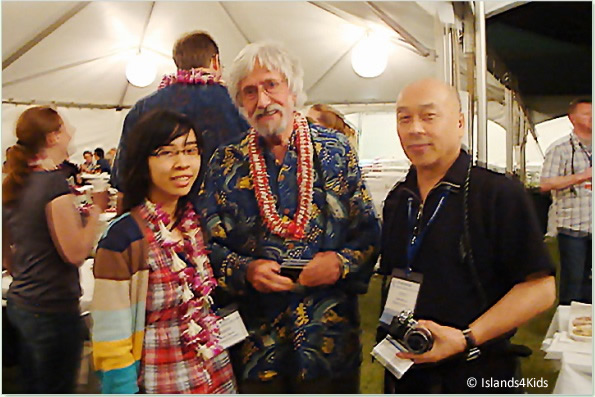 |
With Mr. Jean-Michel Cousteau.
He is a well-known ocean explorer and was a keynote speaker for the conference. |
| |
|
| Karin made a Commitment Speech at the Plenary Session. |
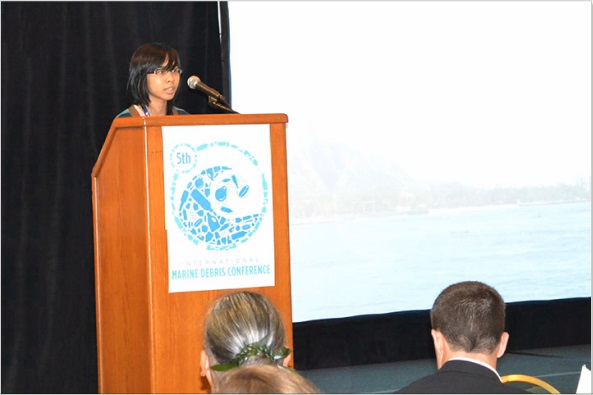 |
| |
|
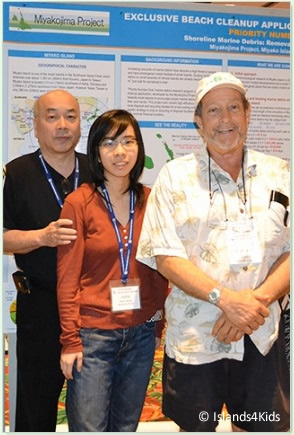 |
Captain Charles J. Moore is one of the most influential oceanographers in the world and the founder of the Algalita Marine Research and Education in Long Beach, California.
He was the first researcher to reveal the existence of "The Great Pacific Garbage Patch" trapped in the North Pacific Gyre.
For more information on the Pacific Garbage Patch, click "READ MORE."

|
| |
|
| Closing Session of 5th IMDC |
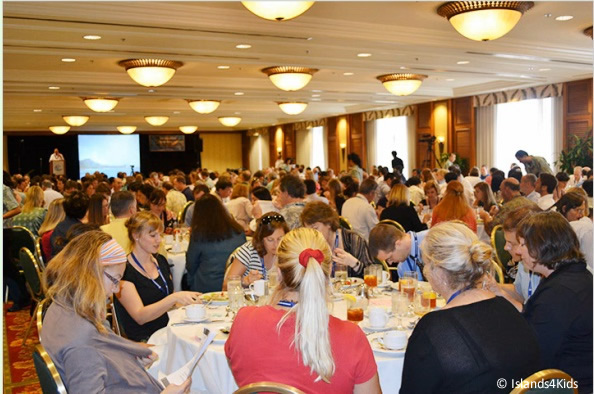 |
| |
|
 |
Environmental Poster |

We made a new poster about the consequences of not taking care of our environment.
Check it out at Make Posters. |
|
|
Copyright © 2014 - 2020 Islands4Kids All Rights Reserved.
Research platform development and web design: Naoko, Karin & T. Otsuka |
|
|